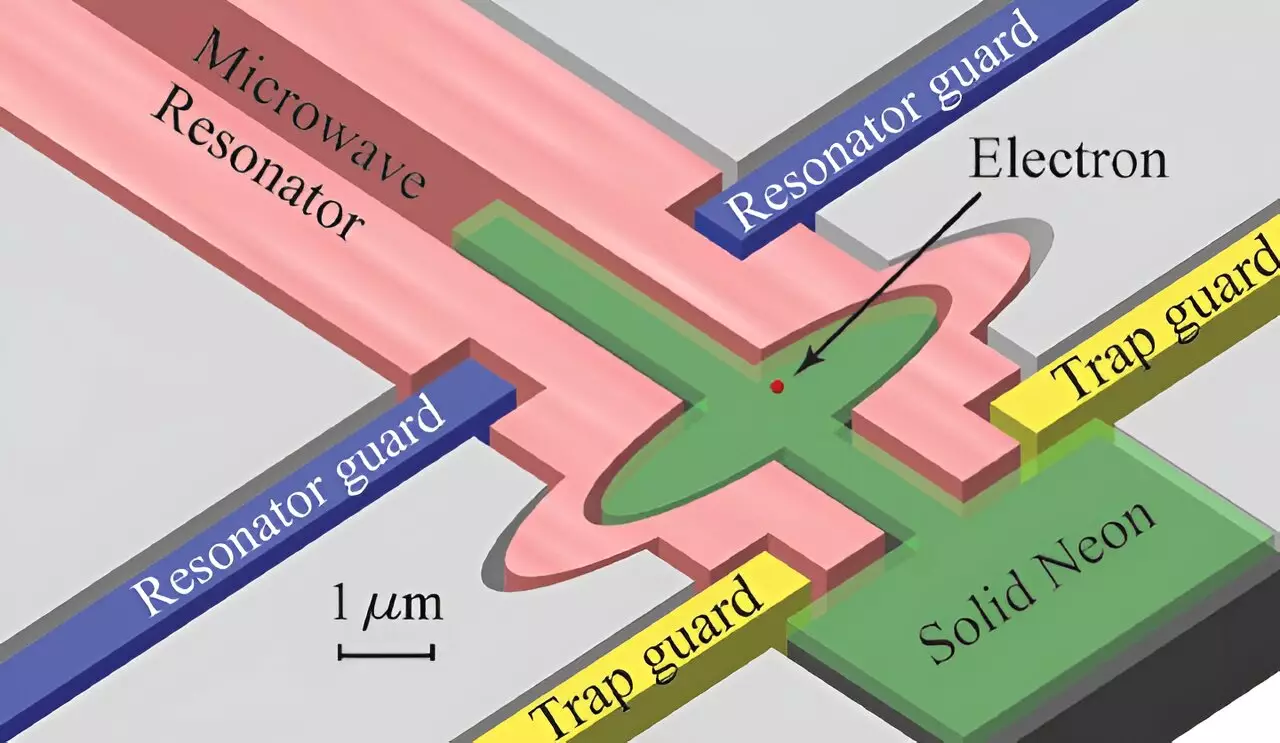Quantum computers have the potential to revolutionize the world of computing by performing calculations at speeds unimaginable to classical computers. In order to achieve this, the key lies in developing reliable quantum bits, or qubits, that can maintain a superposition state for extended periods. One promising approach to achieving this is through the use of electron-on-solid-neon qubits, a concept that has been the subject of groundbreaking research by Professor Wei Guo and his team at FAMU-FSU College of Engineering.
Guo’s recent study, published in Physical Review Letters, sheds new light on the quantum state that characterizes electrons trapped on a solid neon surface. The research reveals that small bumps on the surface of solid neon can naturally bind electrons, giving rise to ring-shaped quantum states. These quantum states play a crucial role in facilitating controlled manipulation of the electron, a key requirement for quantum computing.
One of the key advantages of the electron-on-solid-neon qubit system is its remarkable coherence time, which has been shown to be as long as 0.1 millisecond. This is a significant improvement over conventional semiconductor-based and superconductor-based qubits, which typically have coherence times of only 1 microsecond. The extended coherence time is attributed to the inertness and purity of solid neon, making it an ideal platform for quantum computing.
A critical aspect of optimizing the electron-on-solid-neon qubit system is the design of qubits with smooth surfaces interspersed with strategically placed bumps. These bumps, of the right size, play a crucial role in trapping electrons and enabling controlled manipulation. Minimizing naturally occurring bumps that attract background electrical charge while fabricating bumps of the correct size within the qubit structure is key to enhancing the performance of these qubits.
Guo emphasizes the importance of further research into the manufacturing process of neon qubits, highlighting the impact of injection temperatures and pressure on the final qubit product. The ability to exercise control over these parameters will enable the precise construction of qubits, bringing us closer to realizing the full potential of quantum computing in solving complex problems that are currently beyond reach.
The research conducted by Guo and his team represents a significant step towards unlocking the power of quantum computing through the development of electron-on-solid-neon qubits. By gaining a deeper understanding of the quantum state of electrons on such qubits and optimizing the qubit design, we are moving closer towards harnessing the full capabilities of quantum computing. The future holds immense promise for this innovative technology, paving the way for unprecedented advancements in computing capabilities.


Leave a Reply